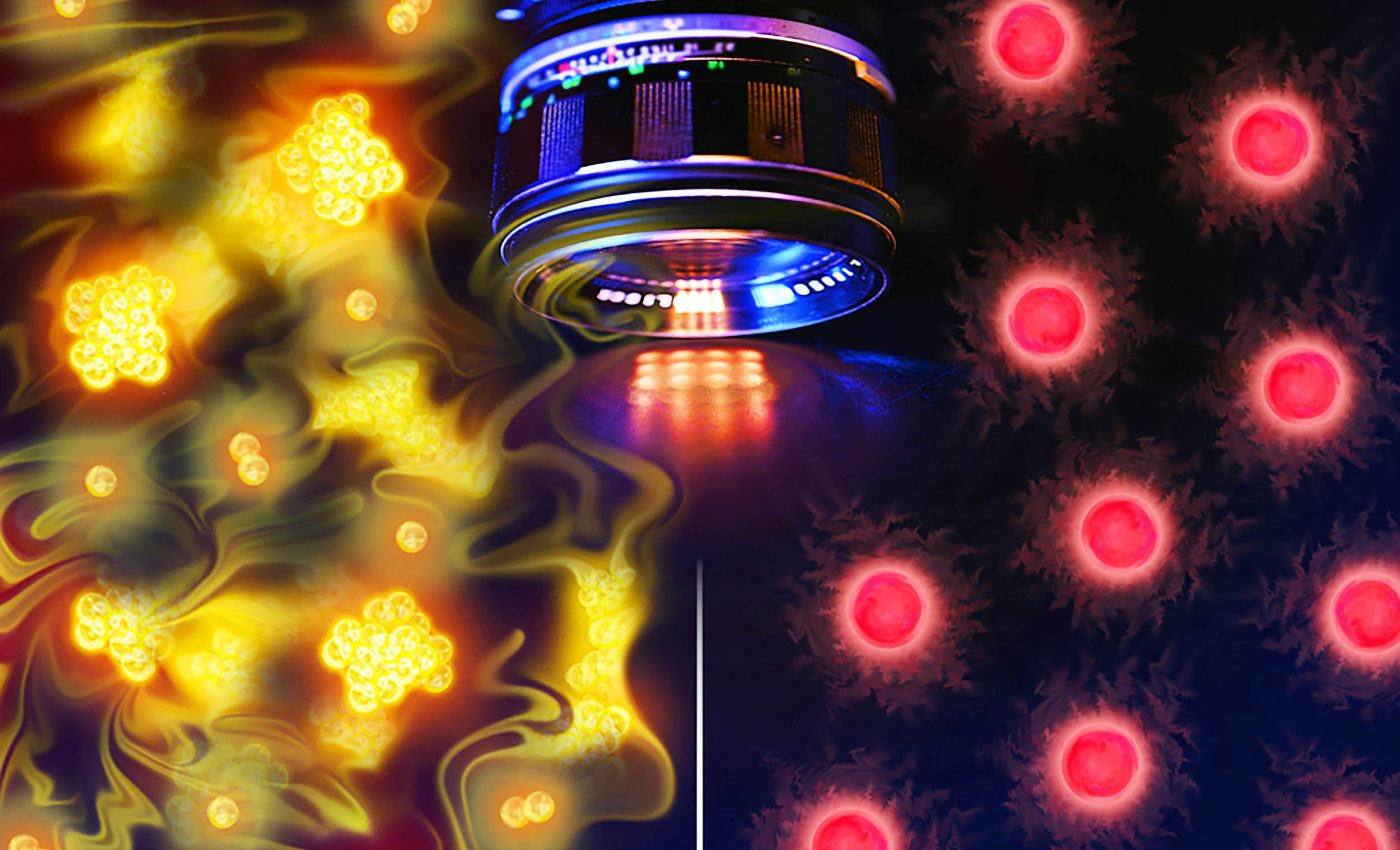
Images of single atoms moving freely through space captured for the first time
Scientists recently snapped pictures of single, “free range” atoms as they move around freely through space – an achievement that has been impossible until now.
This remarkable feat might rewrite our understanding of how minuscule particles behave when they are left to roam without constraints.
These images shed light on interactions that experts predicted but have never witnessed up close.
The breakthrough was led by Martin Zwierlein at the Massachusetts Institute of Technology (MIT), marking a new milestone in the study of quantum behavior at the smallest scales.
Capturing single atoms
The scientists employed atom-resolved microscopy to freeze motion within an optical lattice, which is a pattern of light that holds atoms in place.
This quick snapshot reveals each atom’s location at a precise moment, capturing an instant of genuine quantum dynamics.
Lasers illuminate the trapped atoms, allowing a camera to see them individually before they fade.
The team carefully tuned the light to avoid overheating or scattering the atoms, and ensured that the fleeting structure remained visible just long enough for documentation.
Atomic scale and quantum effects
A nanometer measures one-billionth of a meter, and a single atom often spans about one-tenth of a nanometer.
This scale magnifies the quantum effects, since such tiny dimensions cause particles to follow rules that differ from everyday classical physics.
Earlier imaging methods gave a broad view of atomic clouds but struggled to reveal each atom’s place.
By identifying individual positions, researchers hope to confirm theories about how strongly interacting particles arrange themselves in near-zero temperature conditions.
How single atoms of bosons behave
The group tested the method on bosons, a category of particles known to share identical quantum states.
Under ultracold temperatures, the bosons displayed bunching, indicating that they overlap and move together in ways that challenge our usual sense of matter’s boundaries.
“We are able to see single atoms in these interesting clouds of atoms and what they are doing in relation to each other, which is beautiful,” said Zwierlein.
One result showed sodium atoms merging into a single, wavelike entity, called a Bose-Einstein condensate.
Fermion pairs and superconductivity
Atoms with half-integer spin are fermions, which usually keep their distance from identical neighbors.
In a rare twist, however, certain lithium fermions paired with different spin types, hinting at the same mechanism behind superconductivity, where electrons bind in pairs and are able to conduct electricity without loss.
This direct observation of fermion pairing in free space backs up theories of how quantum particles link up at low temperatures. It may also guide researchers seeking materials that carry current with minimal energy waste.
Single atom research and its impact
Wolfgang Ketterle from MIT was awarded the 2001 Nobel Prize in Physics for his work on the first Bose-Einstein condensate of sodium atoms.
That achievement opened doors to exploring quantum gases in ways previously considered impossible.
His group now explores spin correlations in bosonic atoms, adding to the growing library of quantum snapshots that highlight unusual atomic alignments.

Researchers at other institutions, like École Normale Supérieure in Paris, are also racing to capture fermions and compare different interaction strengths.
Quantum Hall physics
Beyond bosons and fermions, scientists want to investigate quantum Hall physics, where charged particles display intricate choreography in a strong magnetic field.
Observing electrons in that environment may clarify topological behaviors linked to advanced electronic devices.
Previous attempts to interpret these states relied on partial theories and crude sketches. Detailed images could confirm whether these pictures reflect reality or if entirely new frameworks are needed.
By snapping pictures at crucial moments, researchers might confirm whether exotic states truly arise when particles move together in tight quarters.
The data could connect experiments with mathematical models, showing where popular assumptions might fall short.
Such insight might push the search for high-temperature superconductors, a field that aims to support electrical flow with almost no friction at workable temperatures.
Although significant hurdles remain, every new finding brings fresh motivation to uncover practical quantum solutions.
What’s next for single atom imaging
Teams worldwide can now adapt this technique to a range of atoms and molecules, hoping to catch more elusive behaviors.
Each success chips away at the enigma of quantum systems that have long tantalized scientists with their hidden rules.
By refining these methods, groups can capture sharper images and measure correlations with increasing precision.
As they gather more data, patterns may emerge that guide the design of new materials and quantum technologies.
Curiosity about these interactions unites physicists across many fields. Each new picture of these atoms helps understand the unseen phenomena that might change what we know about quantum mechanics.
The study is published in Physical Review Letters.
—–
Like what you read? Subscribe to our newsletter for engaging articles, exclusive content, and the latest updates.
Check us out on EarthSnap, a free app brought to you by Eric Ralls and Earth.com.
—–













